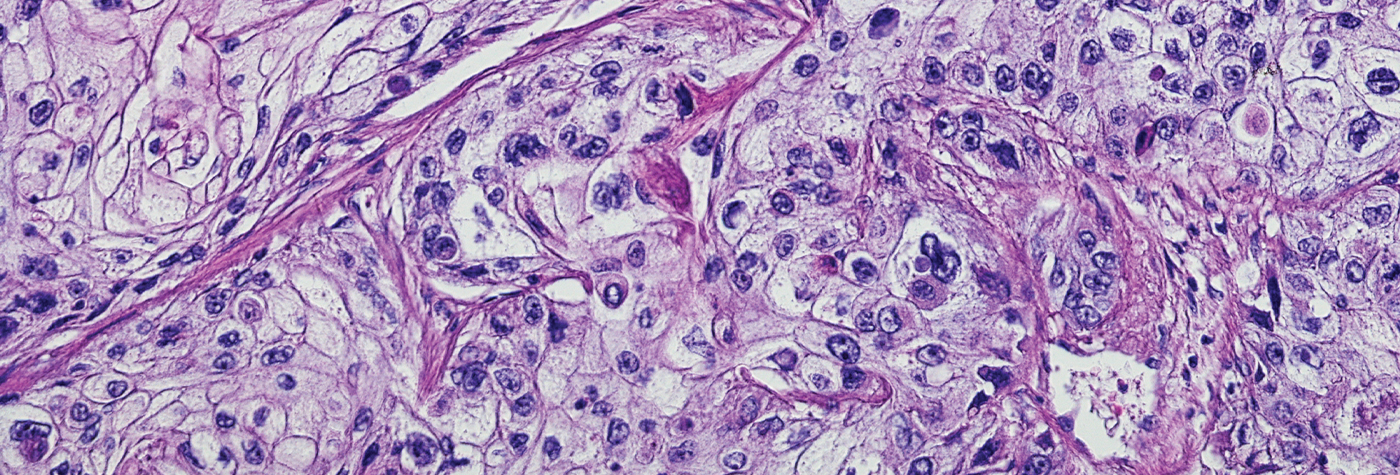Extending melanoma research beyond Kentucky

Markey is the lead institution of a multisite trial to discover how to treat melanoma patients who are resistant to conventional therapies.
A team of UK Markey Cancer Center researchers has embarked on a potentially practice-changing mission to find a new standard of care treatment for patients with melanomas harboring BRAF mutations.
Melanoma patients traditionally have two treatment options. The first is immunotherapy, which most patients are put on regardless of any mutations in their melanoma. This treatment can be curative for up to two-thirds of patients.
If immunotherapy doesn’t eradicate the cancer or if patients cannot tolerate immunotherapy, melanoma patients with BRAF mutations are usually treated with a BRAF-MEK inhibitor combination. Most patients initially respond well to this treatment, but after 12 to 13 months, their cancer typically recurs in an extremely aggressive fashion.
“When the patients relapse, their melanomas metastasize all over the place,” principal investigator Rina Plattner, PhD, said. “These patients then have very little time.” Plattner and her fellow researchers at Markey are trying to figure out why this happens and what they can do to best treat these patients.
“We assembled a team of clinicians, basic scientists and translational researchers to move the needle forward on cancer research.”
Dr. Jill Kolesar
Adding an ABL inhibitor
Plattner’s lab previously found that the ABL kinases (ABL1, ABL2) are important in driving the metastasis in melanoma patients. They also discovered that these kinases play a critical role in resisting BRAF-MEK inhibitors.
When the researchers treated mice with an ABL inhibitor together with a BRAF-MEK combination, the resistance was reversed and the tumors disappeared. Additionally, the researchers found that giving this combination of inhibitors before the resistance begins almost completely prevents the resistance from developing in the first place.
“Current treatment for BRAF mutant melanoma, for patients who cannot tolerate or fail immunotherapy treatment, is a BRAF and MEK inhibitor combination, and there’s no standard treatments if patients fail that,” said Jill Kolesar, PharmD, the director of the Precision Medicine Clinic at Markey. “The addition of an ABL inhibitor to this regimen, if efficacious and tolerable, could lead to changes in the way these patients are managed.”
Securing the necessary medicines
Armed with this information, Plattner and former Markey medical oncologist Peng Wang reached out to the pharmaceutical company Novartis, which owns the rights to the BRAF-MEK inhibitors, dabrafenib and trametinib, and manufactures the leukemia drug nilotinib, a secondgeneration ABL inhibitor.
Novartis agreed to fund a clinical trial. This funding comes in the form of providing the necessary drugs. Nilotinib costs about $4,000 a month per patient, and insurance companies won’t pay for an off-label use.
NCI funds additional research
From there, Plattner developed a multi-PI R01 in collaboration with Kolesar and medical oncologist Dr. Melissa Wilson at St. Luke’s in Easton, Pa., and also enlisted melanoma oncologist Dr. Douglas Johnson to run the trial at Vanderbilt Medical Center.
“The launch of this study outside Markey represents the cancer center’s maturity since the National Cancer Institute designation,” said Dr. Zhonglin Hao, head of multisite clinical trials at Markey.
Since receiving the funding from the NCI in May, the Plattner laboratory is conducting basic science experiments to explore how ABL is driving resistance in both cell culture and in animals. They will also utilize samples from the clinical trial, which has enrolled one patient so far, to confirm their cell culture and animal findings.
Due to the likelihood of drug interactions, Kolesar’s lab is measuring the plasma concentrations of the drugs to ensure patient safety.
“The results of this study, if positive, could be written in the National Comprehensive Cancer Network guidelines,” Hao added.
Benefits of multisite trials
Markey, Vanderbilt and St. Luke’s are all part of this multisite clinical trial. Markey is the leader of three multisite trials supported by the NCI to date, and more are in the works. The cancer center hopes to hire about a dozen people to be able to support up to five multisite studies.
“The main benefit to multisite trials is we can complete them faster,” Kolesar said. “Oncology moves really fast now.”
“The results of this study, if positive, could change clinical practice and inform the National Comprehensive Cancer Network guidelines.”
Dr. Zhonglin Hao
Another advantage of multisite trials is the opportunity to gather the intellectual input of other investigators. Johnson of Vanderbilt is regarded as an international thought leader in melanoma, and Wilson of St. Luke’s has years of experience in managing melanoma patients.
“We assembled a team of clinicians, basic scientists and translational researchers to move the needle forward on cancer research,” Kolesar said.




